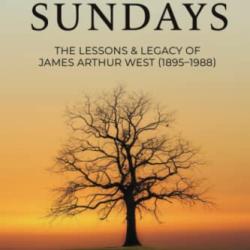The first Pentecost must have been an amazing experience. Before Jesus ascended to His Father, He commanded the disciples to wait in Jerusalem for the Holy Spirit Who had been promised. When He came, Luke tells us of the event:
When the day of Pentecost arrived, they were all together in one place. And suddenly there came from heaven a sound like a mighty rushing wind, and it filled the entire house where they were sitting. And divided tongues as of fire appeared to them and rested on each one of them. And they were all filled with the Holy Spirit and began to speak in other tongues as the Spirit gave them utterance. (Acts 2:1–4, ESV)
Such a beautiful testimony of what God does when His people are faithful. It changed the whole trajectory of history. I wonder what it will take to see history change again?
What follows draws from Ephesiology: A Study of the Ephesian Movement.
Luke’s History of the Early Church
The Acts of the Apostles (Acts) provides a glimpse into the first thirty-four or so years of the Christian movement. Among the book’s purposes was documenting evidence to combat the charges of subversion to the Roman Empire brought against the movement. Its author, Luke, was a physician (Col 4:14) and likely a Gentile, perhaps even Greek. He was an early disciple, probably from the region of Troas in Asia (Acts 16:8–10), perhaps the city of Alexandria (the main Roman port of transportation to Europe), from where the Acts narrative includes his personal eyewitness account.
We know that a church formed in the region (Acts 20:6), presumably by Paul or his disciples. It could have been formed as early as Acts 16:8–10, before his first journey to Macedonia in AD 48. We know Paul had an ongoing ministry in Troas, as he mentions it while waiting for Titus before departing for Macedonia (Acts 16:8; 2 Cor 2:12–13). Almost a decade later, around AD 57, he returned for seven days on his way to Jerusalem prior to meeting the Ephesian elders (Acts 20:6). Luke, therefore, most likely came to Christ in Paul’s ministry and joined him in AD 48 as he continued on his second missionary journey.
Luke and Hyperbole
There is little doubt that Luke used hyperbolic language in communicating the impact of the gospel. For example, in regard to the day of Pentecost in AD 30, Luke writes, “Now there were dwelling in Jerusalem Jews, devout men from every nation under heaven” (Acts 2:5). We know that this was simply a rhetorical device indicating that many people were in the city. It is apparent that the population of the city grew during times of festivals and declined over subsequent weeks as people returned to their homes.
However, it does not seem plausible that “every nation under heaven” was in Jerusalem at that time. Nevertheless, Luke reports that there were people from the world he knew: “Parthians and Medes and Elamites and residents of Mesopotamia, Judea and Cappadocia, Pontus and Asia, Phrygia and Pamphylia, Egypt andthe parts of Libya belonging to Cyrene, and visitors from Rome, both Jews and proselytes, Cretans and Arabians—wehear them telling in our own tongues the mighty works of God” (Acts 2:9–11).
Luke records that at the end of Peter’s proclamation of the gospel, about 3,000 people believed and were baptized (Acts 2:41). Not too long afterward, another 5,000 men believed (Acts 4:4). As their numbers continued to increase (Acts 5:14), in a relatively short period of time, the church grew from 120 to nearly 14,000 men, women, and children in the city of Jerusalem alone.[1]
First Century Data
These data present a challenge, however. Estimates of the population of Jerusalem in the first century put the number of inhabitants of the city at around 10,000 at the time of Herod (Russell 1958, 82). Considering the fact that there were additional people attending the Shavout (Feast of Weeks) from “every nation under heaven,” as Luke suggests, and the fact that Jewish men were required by law to attend the pilgrimage feasts (Deut 16:16), we can easily assume that the population swelled significantly, as Josephus suggested on one occasion during the reign of Nero (AD 53–68):
And that this city could contain so many people in it is manifest by that number of them which was taken under Cestius, who being desirous of informing Nero of the power of the city, who otherwise was disposed to condemn that nation, entreated the high priests, if the thing were possible, to take the number of their whole multitude. So these high priests, upon the coming of their feast which is called the Passover, when they slay their sacrifices, from the ninth hour to the eleventh, but so that a company not less than ten belong to every sacrifice, (for it is not lawful for them to feast singly by themselves,) and many of us are twenty in a company, found the number of sacrifices was two hundred fifty-six thousand five hundred; which, upon the allowance of no more than ten that feast together, amounts to two million seven hundred thousand two hundred persons that were pure and holy; for as to those that have the leprosy, or the gonorrhea, or women that have their monthly courses, or such as are otherwise polluted, it is not lawful for them to be partakers of this sacrifice; nor indeed for any foreigners neither, who come hither to worship. (The War of the Jews, VI, 9, 3; emphasis added)
If there were 2.7 million “pure and holy” people in Jerusalem at the time of the Passover in AD 30 and every male Jew was required to “appear before the Lord” during the Feast of Weeks, then it is easy to see how more than 10,000 people could respond positively to the message of the gospel, especially since devout Jews were hearing the good news of the awaited Messiah in their own languages. We might conclude that even though descriptive language of the events was used, Luke’s recorded numbers could be verified and were thus accurately documented.
Notes
[1] There are New Testament scholars on both sides of the notion that the 5,000 men in Acts 4:4 were in addition to or included the 3,000 people who believed and were baptized in Acts 2:41. See Schnabel (2004, 3) who asserts that the community grew to 5,000 people and Larkin (1995, 70) who maintained the number of new believers at 10,000 men, women, and children. One core issue is the population of Jerusalem. However, neither Schnabel or Larkin recognize the possibility of a sizeable influx of Jews attending the Feast of Weeks. It seems to me that it is plausible to suggest a total of 14,000 men, women, and children since Jewish men were required to travel to Jerusalem and attend feasts.
Adapted from Ephesiology: A Study of the Ephesian Movement (Littleton: William Carey Publisher, 2020)


